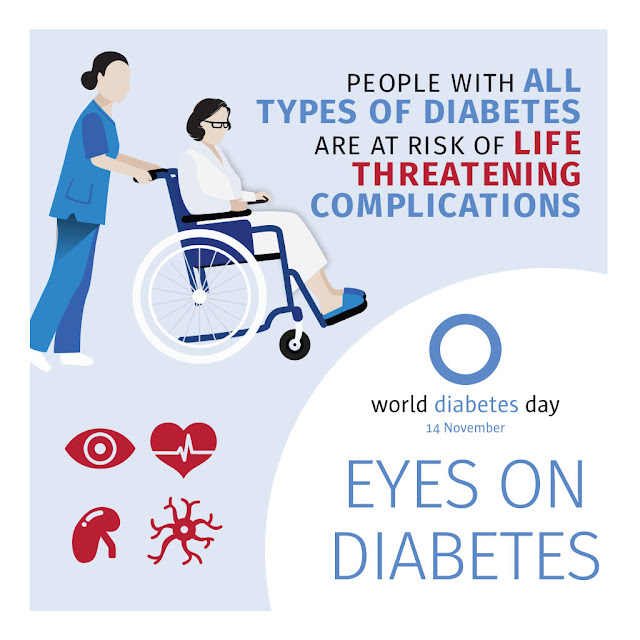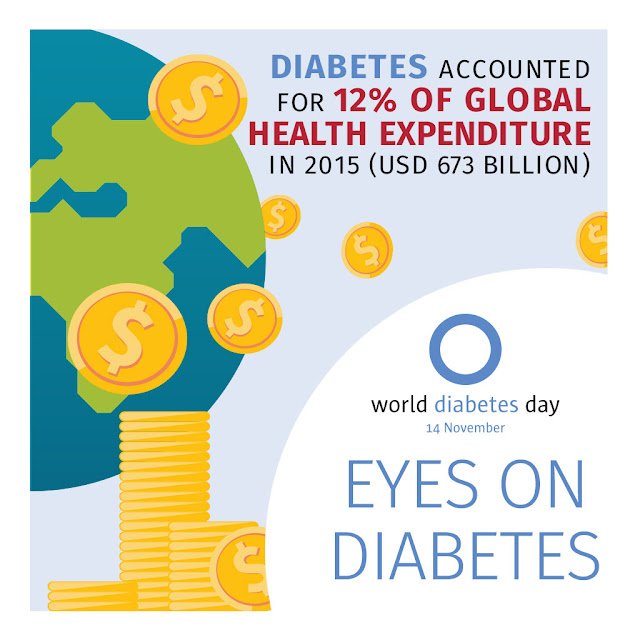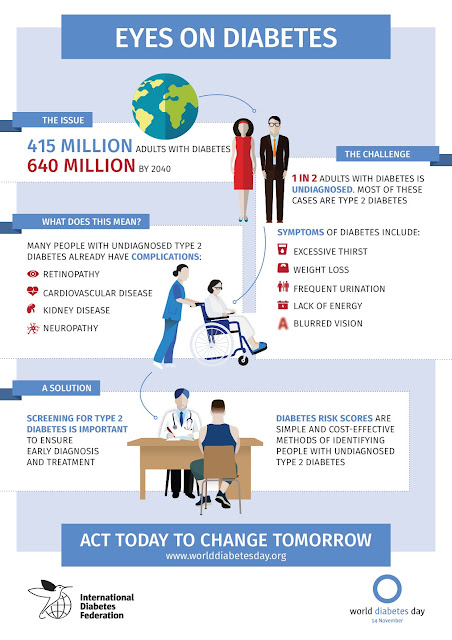Diabetes is a chronic disease, which occurs when the pancreas does not produce enough insulin, or when the body cannot effectively use the insulin it produces. This leads to an increased concentration of glucose in the blood (hyperglycaemia).
Type 1 diabetes
Type 2 diabetes
(formerly called non-insulin-dependent or adult-onset diabetes) is caused by the body’s ineffective use of insulin. It often results from excess body weight and physical inactivity.
Gestational diabetes
Sign and Symptoms
Individuals can experience different signs and symptoms of diabetes, and sometimes there may be no signs. Some of the signs commonly experienced include:
- Frequent urination
- Excessive thirst
- Increased hunger
- Weight loss
- Tiredness
- Lack of interest and concentration
- A tingling sensation or numbness in the hands or feet
- Blurred vision
- Frequent infections
- Slow-healing wounds
- Vomiting and stomach pain (often mistaken as the flu)
- The development of type 1 diabetes is usually sudden and dramatic while the symptoms can often be mild or absent in people with type 2 diabetes, making this type of diabetes hard to detect.
Risk Factors
- Several risk factors have been associated with type 2 diabetes and include:
- Family history of diabetes
- Overweight
- Unhealthy diet
- Physical inactivity
- Increasing age
- High blood pressure
- Ethnicity
- History of gestational diabetes
- Poor nutrition during pregnancy
Prevention
Simple lifestyle measures have been shown to be effective in preventing or delaying the onset of type 2 diabetes. To help prevent type 2 diabetes and its complications, people should:
- achieve and maintain healthy body weight;
- be physically active – at least 30 minutes of regular, moderate-intensity activity on most days. More activity is required for weight control;
- eat a healthy diet, avoiding sugar and saturated fats intake; and
- avoid tobacco use – smoking increases the risk of diabetes and cardiovascular diseases.
- Approximately 415 million adults have diabetes; by 2040 this will rise to 642 million
- The proportion of people with type 2 diabetes is increasing in most countries
- 75% of adults with diabetes live in low- and middle-income countries
- The greatest number of people with diabetes are between 40 and 59 years of age&nb
sp; - 1 in 2 (46%) people with diabetes are undiagnosed
- Diabetes caused 5 million deaths in 2015; every six seconds a person dies from diabetes
- Diabetes caused at least USD 673 billion dollars in health expenditure in 2015 –12% of total spending on adults
- More than 542,000 children live with type 1 diabetes in 2015
- More than 20.9 million live births were affected by diabetes during pregnancy in 2015 – 1 in 7 births
- Diabetic eye disease comprises a group of eye conditions that affect people with diabetes. These conditions include diabetic retinopathy, diabetic macular edema (DME), cataract, and glaucoma.
- All forms of diabetic eye disease have the potential to cause severe vision loss and blindness.
- Diabetic retinopathy involves changes to retinal blood vessels that can cause them to bleed or leak fluid, distorting vision.
- Diabetic retinopathy is the most common cause of vision loss among people with diabetes and a leading cause of blindness among working-age adults.
- DME is a consequence of diabetic retinopathy that causes swelling in the area of the retina called the macula.
- Controlling diabetes—by taking medications as prescribed, staying physically active, and maintaining a healthy diet—can prevent or delay vision loss.
- Because diabetic retinopathy often goes unnoticed until vision loss occurs, people with diabetes should get a comprehensive dilated eye exam at least once a year.
- Early detection, timely treatment, and appropriate follow-up care of diabetic eye disease can protect against vision loss.
- Diabetic retinopathy can be treated with several therapies, used alone or in combination.
- https://www.idf.org/wdd-index/about.html
- http://www.who.int/mediacentre/factsheets/fs312/en/
- http://www.idf.org/wdd-index/wdd2016.html
- https://nei.nih.gov/health/diabetic/retinopathy







